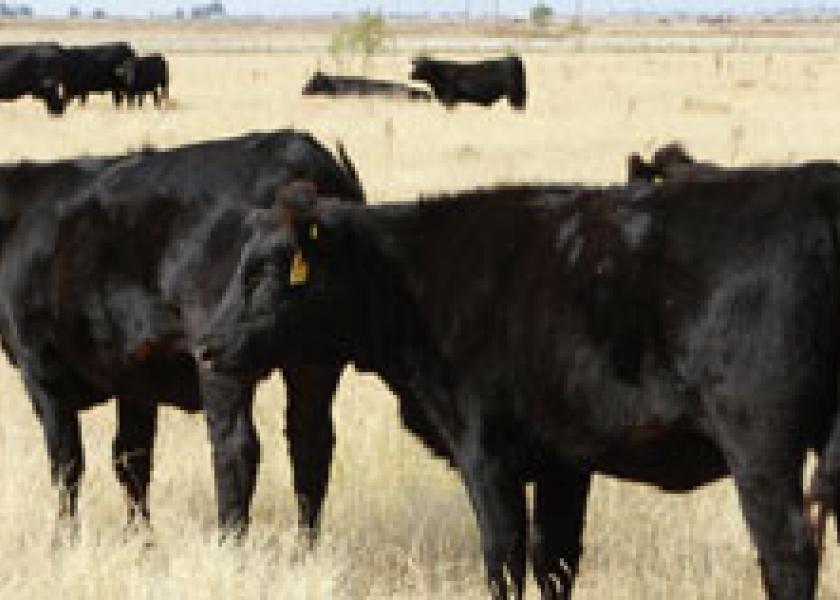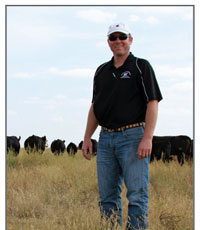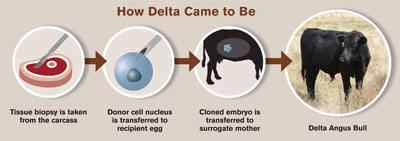Cloning a Steak

Can meat quality be reverse engineered?
When Ty Lawrence told his father, a Texas Panhandle rancher, he was hoping to create a new breed of cattle by cloning a few high Prime, Yield Grade (YG) 1 carcasses, “he thought I was crazy,” he says.
“He was thinking like a rancher,” surmises the younger Lawrence, a professor of animal science at West Texas A&M University (WTAMU). Traits such as calving ease, mothering ability and growth rate seemed more important to his dad. But to the younger Lawrence, a 2002 graduate from Kansas State University’s doctoral program and steeped in the meat industry’s new carcass merit ethics, it made a lot of sense.
 |
New cloning techniques has Ty Lawrence looking to create a new beef breed for higher yielding carcasses. |
Consider the way, for instance, a car company does business. First, they ask the designers to design a sweet looking car that goes fast, runs cheap or doesn’t cost much—something that fits consumer demand. Then, they ask the marketers what they can sell. Finally, they ask the engineers to figure out how to manufacture that product profitably.
In the cattle and beef business, we’ve always developed our product line in reverse. We select cows that will produce a calf efficiently and tell the marketing arm—the packers and retailers—to sell what we provide. That does not always, or even usually, result in a product that makes consumers happy.
Which is how Lawrence and Dean Hawkins, dean of the College of Agriculture and Natural Sciences at WTAMU, decided to get the university into the cloning business and why there are now two cloned bulls, three cloned cows and a bunch of their offspring sporting the WT freeze brand.
The plan is to start with animals that will produce high-yield, high-quality carcasses and then select within that group for the various other traits that make a good line of cattle. Sure, he says, “it will take years, maybe decades,” and there is no guarantee of success. But he’s hoping to build a composite breed—or several composite breeds, perhaps—that will work for the beef business as well as the cow business.
Not to promise a world of Prime, YG 1 cattle, of course. But would it be a faster way to enhance the number of Choice YG 2 carcasses?
This idea came while he was watching carcasses go through the packing plant. You can stand there all day and not see one YG1, Prime carcass come by, he says. When they do come through, though, they are a sight to behold.
In the pre-Dolly-the-sheep days, there was no way to take advantage of those rare post-mortem homeruns. But now, you can clone about anything using nuclear transfer. All you do is take some DNA from the carcass you want to reincarnate, splice it into a donor cell, implant that into a recipient cow and out pops a replica. Easy as 3-D printing—or at least workably close. It’s a bit pricey, of course, but ViaGen agreed to provide the service to WTAMU and created Alpha, the first bull; Gamma Gamma Gamma (1, 2 and 3); and Delta, the second bull.
None of them were chosen on carcass merit alone, by the way. Using established DNA markers, the team used genetic markers for other important traits to select the individuals to clone.
At press time, nine bulls and four heifers—the result of matings between the Alpha bull and the three Gamma heifers—are ready for weaning. They’ve spent their lives as regular calves on the university’s 2,400 acre ranch, mingling among the commercial calves. WTAMU figures they’re the first calves in history to result from two carcass clones. The calves—even with the three Gamma mamas—are genetically full siblings.
There are a couple of side notes here. First being that none of these clones is about to win Denver or, for that matter, the local 4-H show. Alpha, the first bull clone, is 86% Angus and 14% Brahman. Delta, the yearling bull cloned in 2014, is 100% Angus. The Gamma cows are full-blood Wagyu. The pictures of them as yearlings look like something most cowmen would cull just for ugly if not for growth potential.
“Certainly not what we would have chosen visually,” Lawrence says. But the calves are a different matter. They’re long, framy and well-muscled. Not show stoppers, necessarily, but nothing a buyer would kick out of the ring.
The WTAMU team figures to keep the heifers and perhaps three of the bulls. That will leave six or so bulls to be castrated and fed out for harvest next year.
That will give the team a chance not only to look at the carcass results, but to watch how they perform in the feedlot. That—and with the DNA markers providing some assurance on the matter—will be a crucial step in deciding where to go next. Who’s to say one of them won’t ring all the bells from average daily gain to high feed efficiency and still turn out a Prime, YG 1 carcass?
Lawrence is keeping his expectations low, but it’s hard not to speculate on the potential returns of such backwards engineering in an era when there are so many new tools available and the potential reward so high. At press time, Consolidated Beef Producers says a Prime, YG 1 carcass would be worth about $30 per cwt more than a Choice, YG 3.
That’s $290 on a 900-lb. carcass. That’s enough bonus to catch the attention of even the most cost-conscious rancher. And considering we produce 24 or so million fed cattle a year, there is a huge theoretical reward for upgrading carcass scores.
The WTAMU team has entered a competitive race, though. With genomic tools such as regularly interspaced short palindromic repeat (CRISPR)/Cas9 nuclease techniques—where individual traits are implanted into host cells, allowing for individualized trait reproduction—coming on fast, science is offering all sorts of new tools for “fixing” desirable traits.
 |







